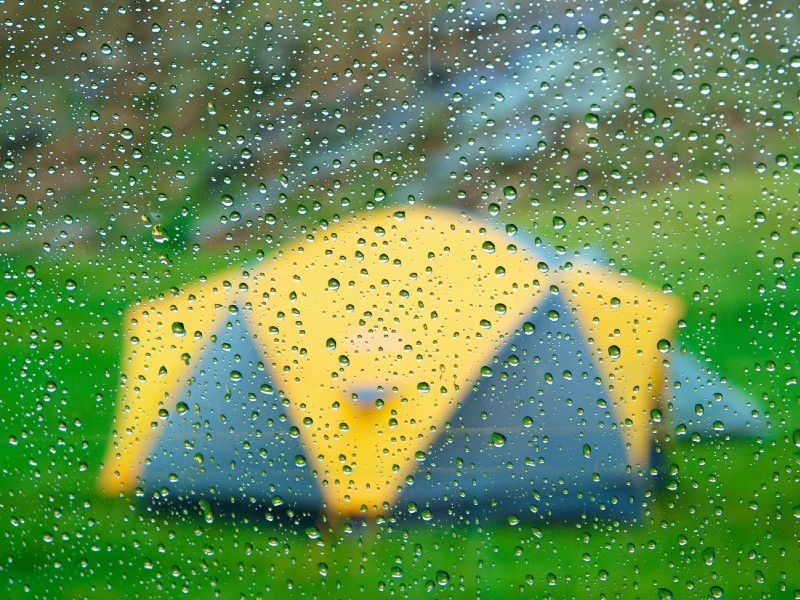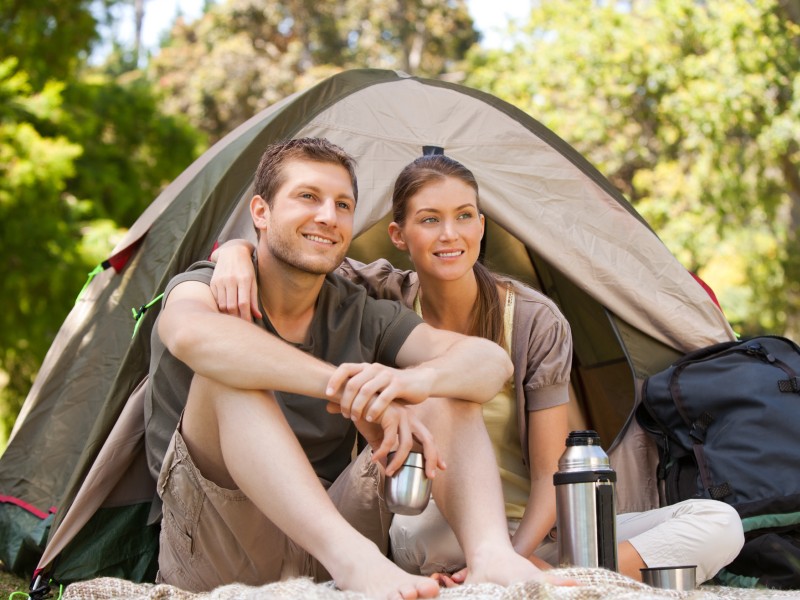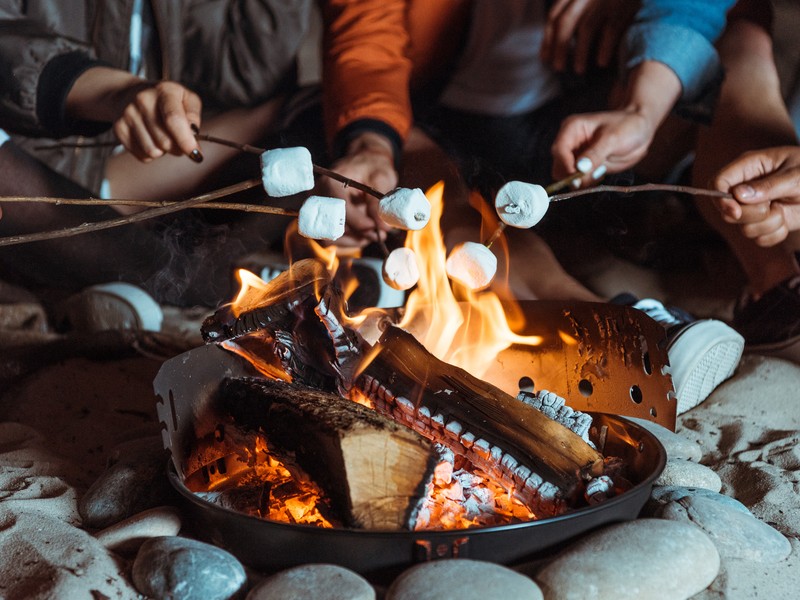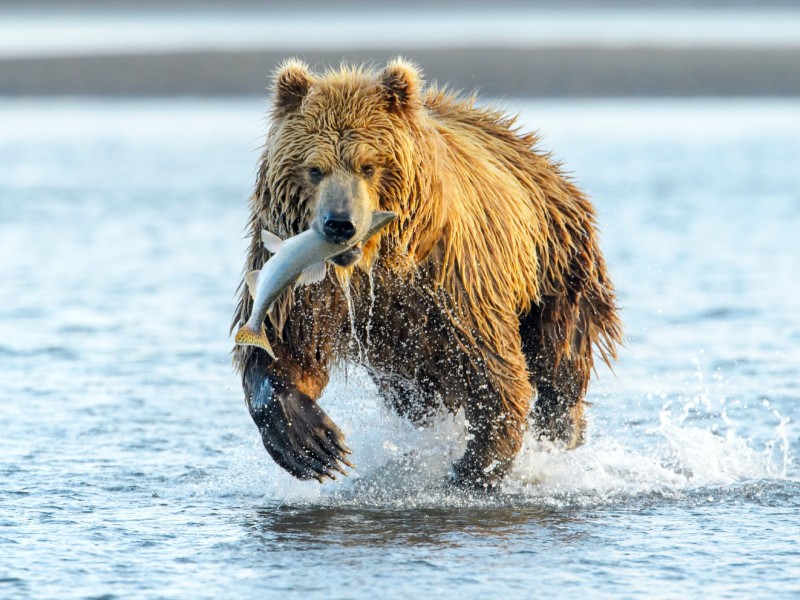Being Prepared to Handle Rainy Weather When Camping
Pack Your Supplies in a Waterproof Backpack
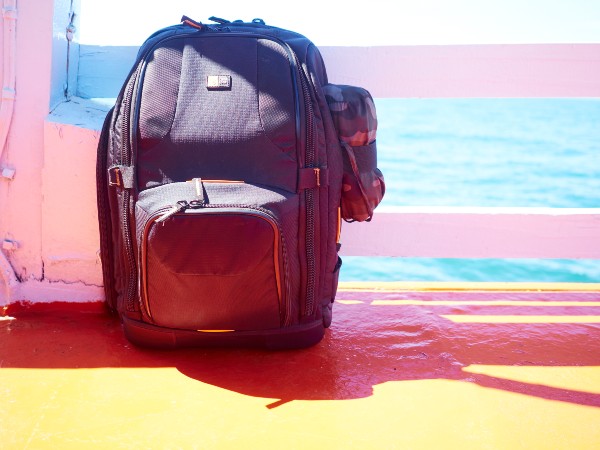
A waterproof backpack is a camping essential. If you run into any unexpected rain at your campsite or when you’re out on a hike, it can help you keep your clothing and other gear dry.
A waterproof backpack can also come in handy if you will be crossing through any creeks or streams or doing any fishing on your camping trip.
Most of us wonder what would happen if we can’t set up our tent or simply forget how to do so. Don’t worry because it comes as second nature.
Dress in Layers
Dressing in layers is another way you can be prepared to handle unexpected weather when camping. Not only can the layers help keep you warm during a cold rain, but they will allow you to remove wet clothing after the rain has passed or once you arrive at your campsite.
This will prevent you from needing to completely change your clothing and will be less of an interference with your camping trip.
Wear Waterproof Boots
Wearing or packing a pair of waterproof boots is another important measure to take to be prepared for rain. When you are purchasing a pair of waterproof boots, there are a few different things you’ll want to look for.
First, be sure to pick a pair of boots that is actually waterproof, not just water resistant. A water-resistant boot will not keep your feet dry in heavy rain or when walking through puddles.
You will also want to look for a boot that is comfortable. You are going to be wearing it for long periods of time and will be doing a lot of walking, so be sure to pick something that is supportive and provides some cushioning for your feet.
Finally, pick a high-quality boot. It is probably worth it to spend a little extra money to ensure you are choosing a product that will last. Pay attention to reviews and go with a well-trusted company.
Create a Shelter
Just because it’s raining at your campsite doesn’t mean that you and the people you’re camping with need to be banished to the tents.
You can create a shelter outside that will allow everyone to gather and enjoy the trip together. Use a heavy-duty tarp and secure It to a few trees around your campsite using some heavy-duty string or cords.
This tarp can also double as a shaded area once the rain has passed.
You mainly have to know this because what happens if you get lost while hiking? You’ll need to have a place to sleep.
Bring a Clothesline
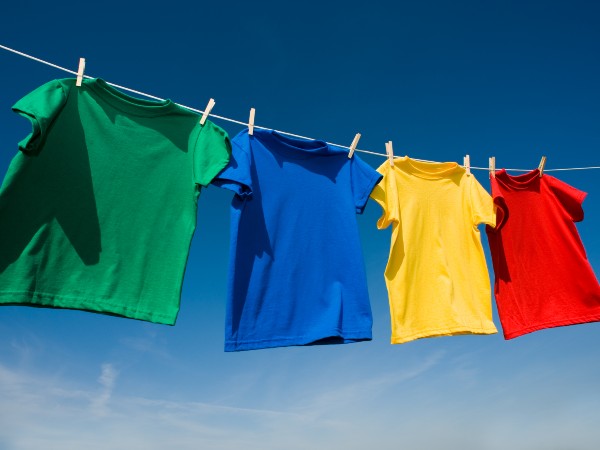
Rain means wet clothes. You will want to find a way to dry your clothes out so you can either wear them again the next day or make sure they are dry to pack up.
If you bring a clothesline, you can hang it under the shelter you make with a tarp. If you are unable to make a shelter, you may be able to find a way to hang the clothesline up inside your tent to allow your clothes to dry.
Opt for an Elevated Camp Site
If you’re going to be camping out in the rain, it is important to choose an appropriate campsite. You definitely won’t want to set up your tents right next to any lakes or streams.
Trying to find a slightly elevated campsite can also help. Since rain will flow down to lower elevations, if you are able to choose a site that has some elevation, less rain run-off will be directed at your tent.
Finally, when you select the location for your tent, make sure that you do not place it under trees. The leaves on the tree will hold water from the rain and will continue to drip water onto your tent even after the rain has stopped.
Plus, tree branches could fall on your tent due to rain or wind.
Bring a Sleeping Pad
Be sure to pack a sleeping pad to make it easier to handle the weather for the possibility of a rainy camping trip.
Placing the sleeping pad under your sleeping bag will provide you with some extra protection from the cold and wet ground beneath your tent.
Bring Along a Reliable Lighter
Starting a fire in the rain isn’t impossible, but it is definitely more of a challenge. You will want to make sure to pack a reliable lighter that will help you get a good fire going.
You will definitely appreciate a warm fire after getting all wet from an unexpected rainstorm; it can help you dry off and warm you up. You’ll likely also want to get a campfire going to help you cook your meals.
If you get into a case like this then you have to know what to do if your matches get wet!
Pack Dry Newspaper
Dry Newspaper is another item that can help you get your campfire going. It will burn more easily than the wet sticks and twigs that will be around the campsite.
Plus, the dry newspaper can also be used to help you dry your shoes overnight. If you place crumpled-up newspaper in your shoes it will absorb some of the moisture, allowing your shoes to dry more quickly.
Pack Extra Food
While you may bring supplies designed to help you get a fire started, there is no guarantee that you’ll be able to actually get it started or keep the fire going. Be sure to pack some foods that won’t need to be cooked.
Be sure to pack some higher protein options including nuts, jerky, canned meat, and protein bars.
Explore the Great Outdoors with Us!
Being Prepared for Very Cold Temperatures
Put Tomorrow’s Clothes in Your Sleeping Bag with You
If you’re camping when it is very cold, one of the hardest things is getting up in the morning and changing into your freezing cold clothes that have been sitting out in your tent.
Instead of leaving tomorrow’s clothes out in the tent or in your backpack, put them inside your sleeping bag with you. Your body heat will warm them up, and when it is time to get dressed in the morning, your clothes won’t be freezing cold.
Pack Hand Warmers

During a cold camping trip, a pair of hand warmers will be a very welcomed addition to handle the weather. They can help you keep your hands warm in your gloves or can be used to warm you back up after being out in the cold for an extended period of time.
Hand warmers are small and lightweight, making them easy to toss in your bag for your camping trip. Whenever you’re ready to use them, you’ll just need to give them a good shake, and they’ll be able to start warming up your hands.
Flip Your Water Bottle Upside Down Overnight
This tip may sound silly, but it can actually help. The water on the top of a water bottle will freeze first.
This can make it challenging to drink any of the liquid water that remains in the bottom of the bottle. However, if you flip your water bottle upside down before you go to bed, when you wake up and need a drink, you can flip the bottle over and the frozen water will actually be on the bottom of the bottle.
You’ll be able to drink the liquid water with no problems.
Pack an Insulated Sleeping Bag
An insulated sleeping bag is a must for a camping trip where you may experience very cold weather conditions.
The insulation will prevent your body heat from escaping and prevent the cold outside air from penetrating the bag. This will work to keep you warmer as you sleep.
You can also consider looking for a sleeping bag that has a hood that will provide more coverage and protection for your head on a cold night.
Avoid Wearing Cotton Clothing
This one may sound a bit surprising, but cotton clothing is not an ideal choice to wear when you are camping, especially if it is going to be cold. Clothes that are made using cotton do not wick away moisture.
You will not be able to dry off as quickly or get as warm if you choose to wear cotton instead of a better material such as polyester, wool, or polypropylene.
As you can see, some rainy weather or cold temperatures don’t have to ruin your camping trip and you can handle it easily. Being prepared for whatever weather Mother Nature decides to throw at you can help ensure that you will have an enjoyable camping trip.
Camping During Unexpected Thunderstorms in Hot and Humid Weather (Video)
Related Questions
- What are some essential items to pack for a camping trip to ensure you’re prepared for unexpected weather conditions?
For unexpected weather conditions during a camping trip, it’s essential to pack a waterproof tent with a sturdy footprint, rainfly, and extra tarps for additional shelter.
Also, pack layered clothing including waterproof and insulating items, a good quality sleeping bag suitable for various temperatures, and emergency gear like a first-aid kit, flashlight, and a weather radio to stay informed about any sudden changes in weather.
- How can dressing in layers help you manage unexpected weather changes during a camping trip?
Dressing in layers during a camping trip allows you to adjust to unexpected weather changes by adding or removing clothing as needed.
This strategy provides flexibility, enabling you to stay comfortable and protected in varying conditions, from sudden temperature drops to unexpected rain or wind.
- Why is it important to choose an elevated campsite when camping in rainy weather?
Choosing an elevated campsite when camping in rainy weather is important primarily for avoiding water accumulation.
Higher ground typically drains better, reducing the risk of your tent flooding and keeping your camping gear dry.
- What are some strategies for starting a fire in the rain during a camping trip?
When starting a fire in the rain during a camping trip, it’s crucial to find or create a dry area, such as under a tree or a makeshift shelter, and use dry tinder, like small twigs or fire starters you’ve brought with you.
Additionally, using a reliable ignition source like a waterproof match or a fire steel, and building your fire structure properly, starting with small twigs and gradually adding larger pieces of wood as the fire grows, can greatly increase your chances of success.
- Why is it recommended to avoid wearing cotton clothing during a cold camping trip?
Cotton clothing is not recommended for cold camping trips because it absorbs and retains moisture, including sweat, which can make you feel colder as the moisture evaporates.
Additionally, cotton lacks the insulating properties that materials like wool or synthetic fibers have, meaning it doesn’t retain heat well, which can lead to hypothermia in cold conditions.
"Of all the paths you take in life, make sure a few of them are dirt."
-- John Muir
